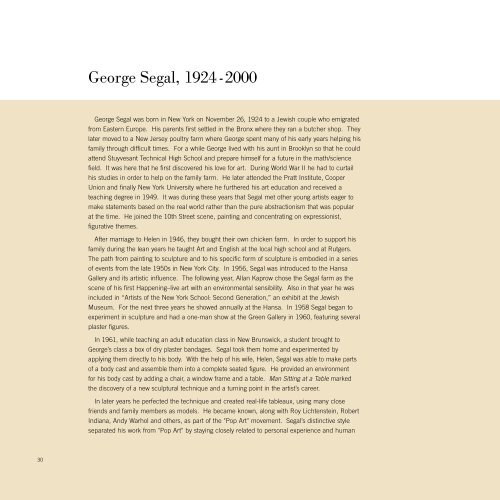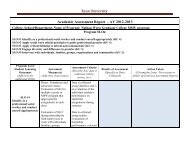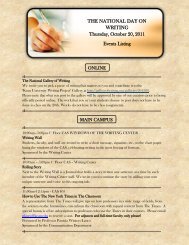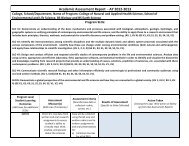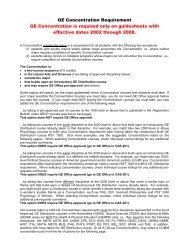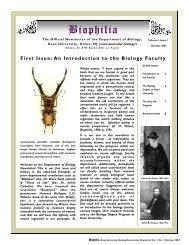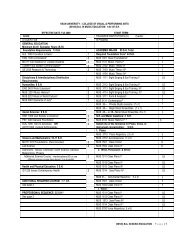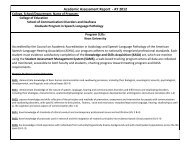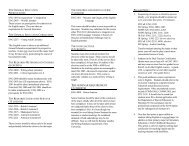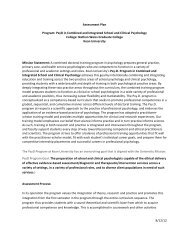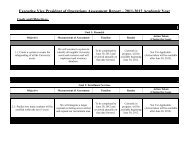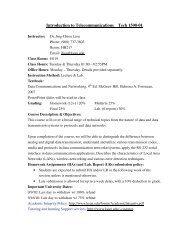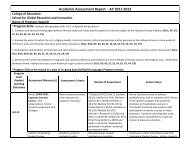GeorGe SeGal - Kean University
GeorGe SeGal - Kean University
GeorGe SeGal - Kean University
You also want an ePaper? Increase the reach of your titles
YUMPU automatically turns print PDFs into web optimized ePapers that Google loves.
30<br />
George Segal, 1924 -2000<br />
George Segal was born in new York on november 26, 1924 to a Jewish couple who emigrated<br />
from Eastern Europe. His parents first settled in the Bronx where they ran a butcher shop. they<br />
later moved to a new Jersey poultry farm where George spent many of his early years helping his<br />
family through difficult times. For a while George lived with his aunt in Brooklyn so that he could<br />
attend Stuyvesant technical High School and prepare himself for a future in the math/science<br />
field. It was here that he first discovered his love for art. During World War II he had to curtail<br />
his studies in order to help on the family farm. He later attended the Pratt Institute, cooper<br />
union and finally new York university where he furthered his art education and received a<br />
teaching degree in 1949. It was during these years that Segal met other young artists eager to<br />
make statements based on the real world rather than the pure abstractionism that was popular<br />
at the time. He joined the 10th Street scene, painting and concentrating on expressionist,<br />
figurative themes.<br />
After marriage to Helen in 1946, they bought their own chicken farm. In order to support his<br />
family during the lean years he taught Art and English at the local high school and at rutgers.<br />
the path from painting to sculpture and to his specific form of sculpture is embodied in a series<br />
of events from the late 1950s in new York city. In 1956, Segal was introduced to the Hansa<br />
Gallery and its artistic influence. the following year, Allan Kaprow chose the Segal farm as the<br />
scene of his first Happening–live art with an environmental sensibility. Also in that year he was<br />
included in “Artists of the new York School: Second Generation,” an exhibit at the Jewish<br />
Museum. For the next three years he showed annually at the Hansa. In 1958 Segal began to<br />
experiment in sculpture and had a one-man show at the Green Gallery in 1960, featuring several<br />
plaster figures.<br />
In 1961, while teaching an adult education class in new Brunswick, a student brought to<br />
George’s class a box of dry plaster bandages. Segal took them home and experimented by<br />
applying them directly to his body. With the help of his wife, Helen, Segal was able to make parts<br />
of a body cast and assemble them into a complete seated figure. He provided an environment<br />
for his body cast by adding a chair, a window frame and a table. Man Sitting at a Table marked<br />
the discovery of a new sculptural technique and a turning point in the artist’s career.<br />
In later years he perfected the technique and created real-life tableaux, using many close<br />
friends and family members as models. He became known, along with roy Lichtenstein, robert<br />
Indiana, Andy Warhol and others, as part of the "Pop Art" movement. Segal’s distinctive style<br />
separated his work from "Pop Art" by staying closely related to personal experience and human


